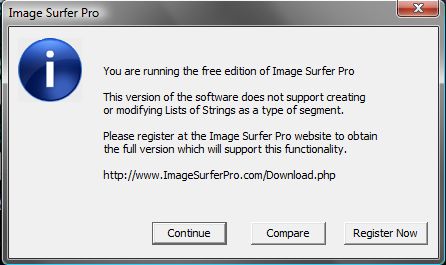What is a Segment?
Your fusker collection is a list of file references. Each file reference is essentially the address of a file much as your mailing address is a reference for you. A file reference consists of an access protocol, a directory structure, and filename. In the Image Surfer Pro Application each portion of the file reference is a Segment including each directory in the directory structure. The Fusker Collection View displays your fusker collection in the form of a tree where each branch of the tree relates to a specific file reference. When files share a common path the portion of the path they have in common will also be a common branch in the fusker collection tree.
Breaking Down A File Reference
For example consider the file reference:
http://www.rexwallpapers.com/images/wallpapers/celebs/sarah/sarah_michelle_gellar_1.jpg
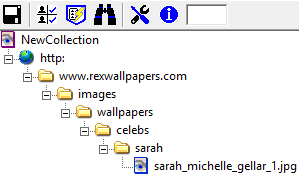
This image reference converted to an ISP Tree would have 7 segments under a collection segment.
The domain access segment (http:) represents the protocol used to access the reference. This segment is
determined when the URL information is extracted by either the
![]() or the URL Capture Bar.
or the URL Capture Bar.
Below the domain access segment are 5 directory segments. The top most of these segments is called the Domain or Root Directory segment. These segments indicate where on the web this file is stored. In this case the file is stored at Rex Wallpapers under the directory images/wallpapers/celebs/sarah
The final segment is always a file segment (sarah_michelle_gellar_1.jpg). Extraction will have defined the URL as an image because the file extension of (.jpg) was recognized as the JPEG image format.
What Makes A Segment
While the Collection and Path segments hold only a single string, all other segments contain at a minimum three individual parts:
-
Pre Text:
This portion of the segment is a set of characters which represent the first characters in the segment’s text. -
Fusk:
This is the portion of the segment which can be represented by a series of numbers or a list of strings. It is the portion of the segment which can reference multiple files or multiple directories with similar names. -
Post Text:
This part of the segment is the character string which follows the fusk in making the full text of the segment.
In our example, the File Segment: sarah_michelle_gellar_1.jpg is originally stored as:
- Pre Text: sara_michelle_gellar_1
- Fusk: Empty
- Post Text: .jpg
Let us assume there are 68 images stored in the same location with similar file names such as:
sarah_michelle_gellar_2.jpg
sarah_michelle_gellar_3.jpg
...
sarah_michelle_gellar_68.jpg
| We could represent this in the fusker collection as 68 file segments under the same access type segment and the same 5 directory segments. In this case each file segment would be similar: | |
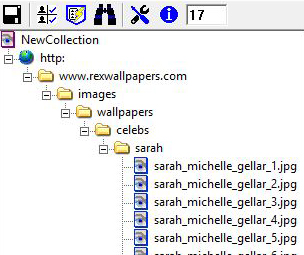
|
|
| This of course is not the only way these 68 files could be referenced, they could be referenced in a single file segment which has been list fusked with each fileanme stored in a list such as: | |
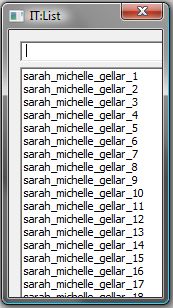
|
|
|
We could also use a single file segment with a numerical fusk which knows the start and end values of the numerical
sequence and how to represent those in the file name: |
|
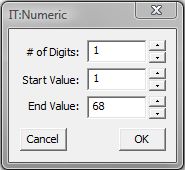
|
|
There are any number of ways to represent the url structures within a fusker collection all of which essentially result in the same final file references. How you decide to represent the information in your fusker collection will be a matter of choice and preference.
There are advantages and disadvantages to each. How you group files into single fusked segments will in someways limit how descriptive and precise the fusker collection is in displaying any given file. For example, in the first example, you can select any of the images of Sarah Michelle Gellar but in the list or numeric fusk you can only select the group of images. In the first two cases you can change the order of the images but cannot in the numeric fusk.
Additional Segment Data
Video, Frame, and Page segments have additional information used to describe the segment.
-
Video Segment Poster:
The poster image of a video is used as an overlay for the video frame while the video loads. Good poster images will give the viewer information about what the video contains prior to them playing the video. If the poster image isn't available the video will appear as a black box on the webpage. Image Surfer Pro not only uses the poster as an overlay but also displays it in Guide Pages.
There is a simgle poset image per video segment. If the video segment is fusked and actually represents more than one video, each video will be displayed with the same poster image. This may effect whether or not you wish to have video segments automatically group together into fusked video segments.
-
Frame Segment Text Description:
Frames typically have some internal mechanism for displaying a poster image over video or other static frame data when a frame is first rendered - but that information is held internal to the data object itself and is not a file Image Surfer Pro can access or control the display of. For use in Guide pages Image Surfer Pro provides a textual description field which you can modify to provide a description which represents the Frame Segment in your collection.
There is a text description per frame segment, so you may want to edit the description for fusked segments to make it clear that more than one frame is actually represented by the link in Guide Pages.
-
Page Segment Text Description:
Pages are also displayed in IFrame tags by Image Surfer Pro and so do not have an image overlay - but rather render the webpage within the frame immediately. So like Frame Segments, Page Segments display a text description of the page which is displayed in they Guide Pages created by Image Surfer Pro
There is a text description per page segment, so you may want to edit the description for fusked segments to make it clear that more than one page is actually represented by the link in Guide Pages.
Frame Segment Size Information
For an Image or Video object on a webpage, if no sizing information is given the image or video is displayed at the native size of the actual data file. If the webpage does specify a size for an Image or Video, the data from the media file is scaled to match that size by the browser. An IFrame on the other hand references a media stream not a specific file and any scaling must be done by the server hosting the stream and the browser must provide sizing information when accessing the stream.
Beacuase of how this scaling is done, a frame segment has sizing information in addition to the text description. The width and height of a frame is read from the HTML code where the frame was found. Sizing infromation is even provided by tube sites in the Copy Embed Code options. Some frame streams render at a fixed size, so if the size of the frame is too small only a portion from the top left corner of the frame will be seen. If the size of the frame is too large, then a black background will be visible around the actual frame data. However, when the frame is primarily a video stream, the server may scale the video to match the size provided.

Image Surfer Pro allows you to have each frame segment sized independently to account for the various ways IFrame data is supported by hosting servers. Choosing Dynamic Sizing will scale the frame to the size of the browser's display window at the time the viewing page is created. If Dynamic Sizing isn't used then the specified fixed width and height will be used.
When a frame segment is fusked the sizing information is used for all of the frames represented by the segment - so make sure when you group frame segments into a single fusked segment that you have considered how the sizing information will effect each of the individual frames.
